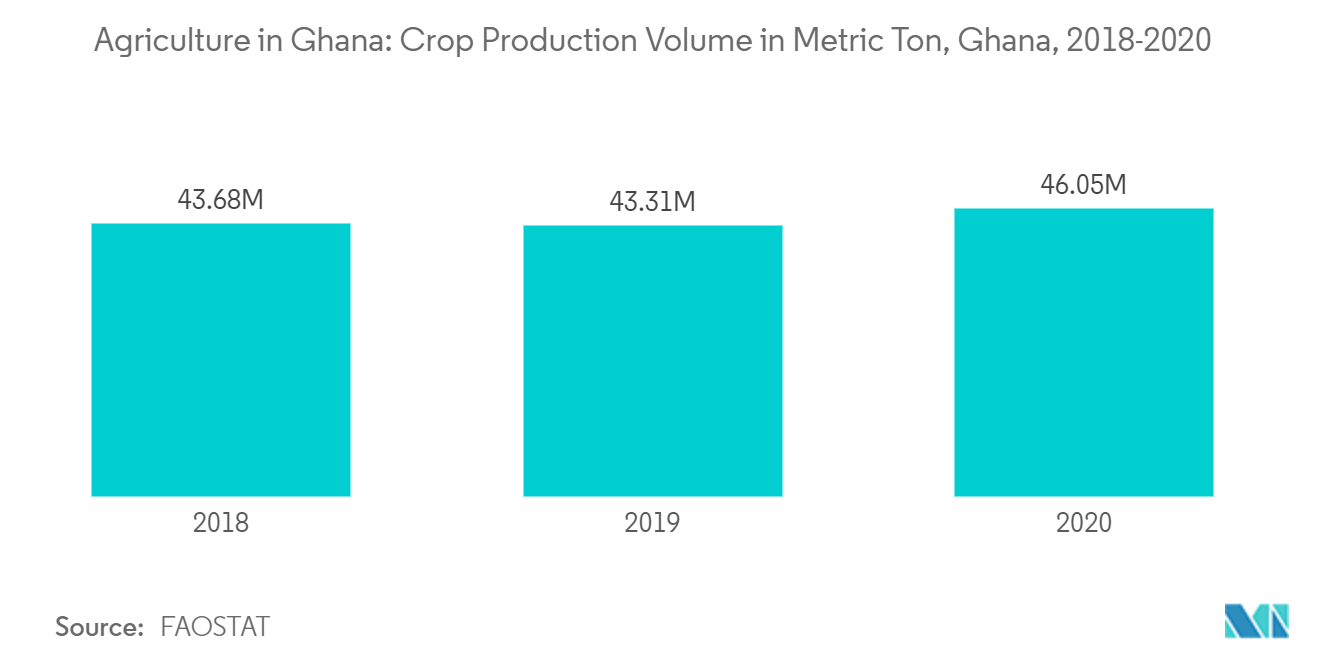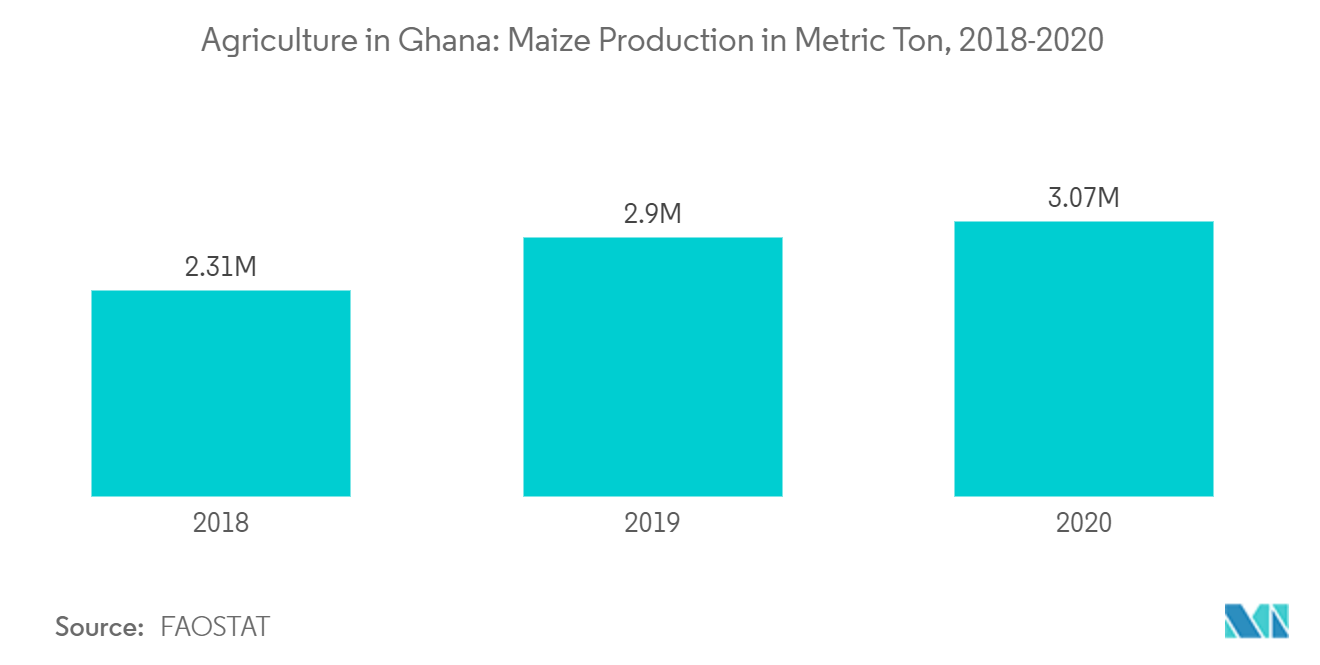Market Trends of Agriculture in Ghana
This section covers the major market trends shaping the Ghana Agriculture Market according to our research experts:
Increasing Demand For Fruits And Vegetables
As the country is witnessing the growth of middle-class families, the number of consumers demanding high-quality fruits and vegetables is increasing in the country. It is estimated that the domestic vegetable market in the country is growing at 10% per year.
Tomatoes, onions, and pepper are the most important vegetables in the country. The demand for fresh fruits, such as pineapples, is very high, mostly intended for export, traditional domestic markets, supermarkets, and fruit processing. There is a growing demand for fresh fruits for processing and juice for local consumption and export. To boost the regional fruit trade, many companies, such as Blue Skies, HPW Fresh & Dry, Peelco, and Pinora, established their fruit processing units in the country, which is boosting the demand for fruits in the country.
Most of the fresh vegetables required in Ghana can be grown in the country, except Irish potatoes and other vegetables that require cool temperature conditions. Most of these vegetables find a ready market in cities and rural areas.
The GhanaVeg program is being implemented by the Center for Development Innovation (CDI). The program's mission is to establish a sustainable and internationally competitive vegetable sector. This initiative targets high-end domestic and international markets, such as high-end supermarkets, hotels, restaurants, and exports. The rise in the initiatives by the program may lead to a surge in the production of vegetables in the country, which is leading the fruit and vegetable segment to be the fastest-growing segment.
Therefore, the increasing consumer trend toward healthy and fresh foods is expected to drive the market during the forecast period.

Maize As The Staple Food Is Dominating The Market
Maize provides a major source of calories in many parts of Ghana. Maize is an important crop grown in Ghana constituting about 70% of the country's cereal production. Maize is grown in almost every part of the country, but the major growing regions are the Forest-Savannah transition zone, accounting for more than 80% of the total maize grains produced in Ghana. It nearly replaced traditional staple crops, like sorghum and pearl millet, in northern Ghana. An average maize grain yield on farmers' fields was about 1.7 t/ha in the year 2020, against an estimated achievable yield of about 6.0 t/ha in the upcoming future. Rising population, urbanization, and growing poultry and fish sectors in Ghana have contributed to increased demand for maize.
Maize production depends heavily on mineral fertilizer, which is sometimes supplemented by manure and crop rotation with legumes. Nitrogen fertilizer is the main driving force to produce maize yields under irrigated and favorable rain-fed conditions in Ghana. There is an increased usage of hybrid seed varieties to maximize the yield of maize in recent years. Along with this, the government initiatives to boost grain production in the country influenced many small-scale farmers to take up maize production. Maize cultivation is expected to show slow but steady growth during the forecast period.

